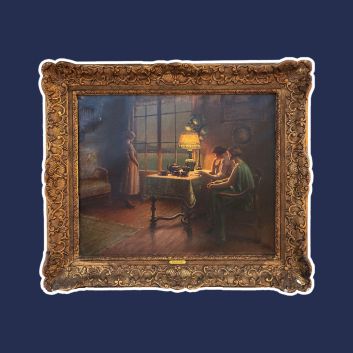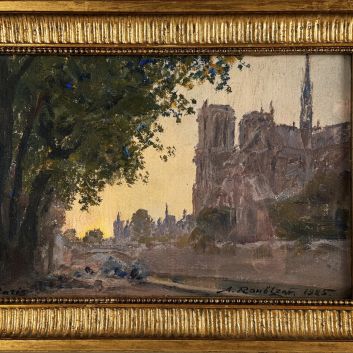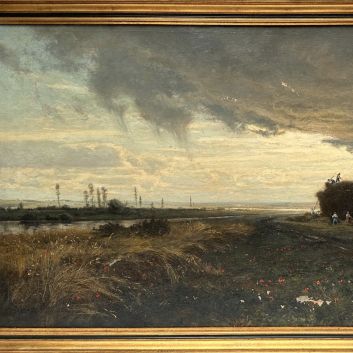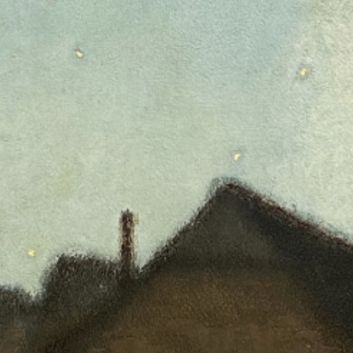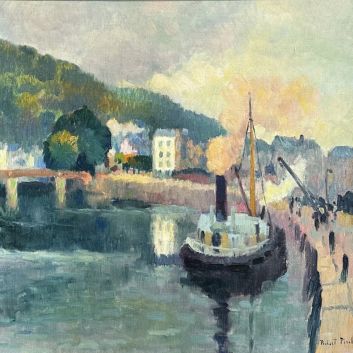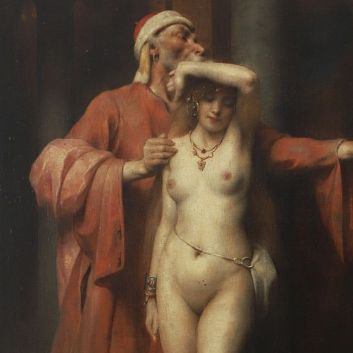Rating and value of paintings by Cornelius Krieghoff
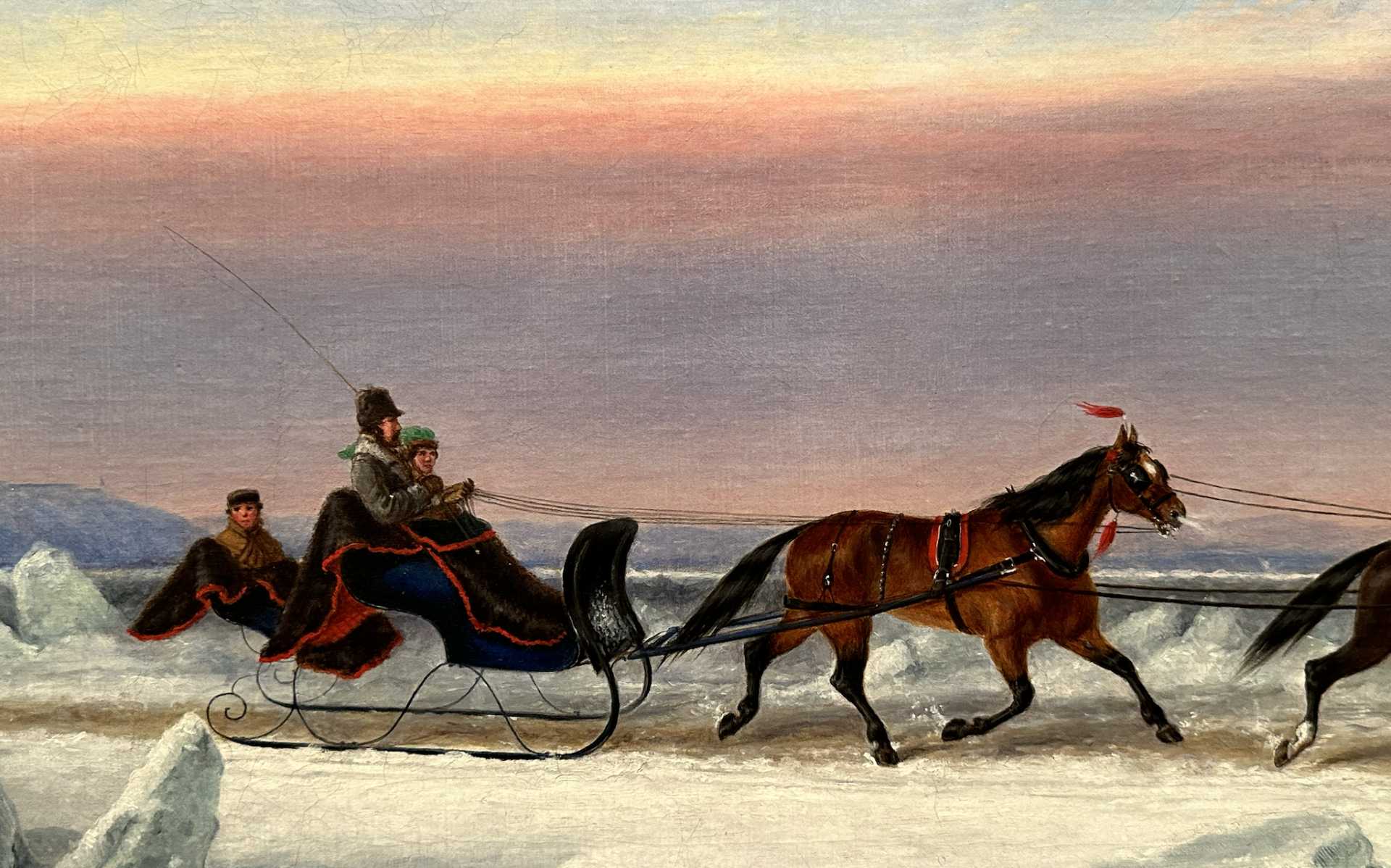
If you own a work by or based on the artist Cornelius Krieghoff and would like to know its value, our state-approved experts and auctioneers can help you.
Our specialists will carry out a free appraisal of your work, and provide you with a precise estimate of its current market value.
Then, if you want to sell your work, we'll point you in the right direction to get the best possible price for it.
Artist's rating and value
An important Dutch-Canadian artist, Cornelius Krieghoff is highly regarded on the auction market. Having worked mainly in Canada, he is one of the best-known painters of his time.
Appreciated, Krieghoff's works sell for between €70 and €142,900 on the art market, a substantial delta but one that speaks volumes about the value that can be attributed to the artist's works.
In 2021, a landscape painting entitled Quebec Farm sold for €323,650, against an estimate of between €10 and €323,650. The result far exceeded the high estimate.
Order of value from the most basic to the most prestigious
Technique used | Results |
|---|---|
Drawing - watercolor | From €1,100 to €23,800 |
Print - multiple | From €10 to €33,000 |
Oil on canvas | From €650 to €323,650 |
Response in less than 24h
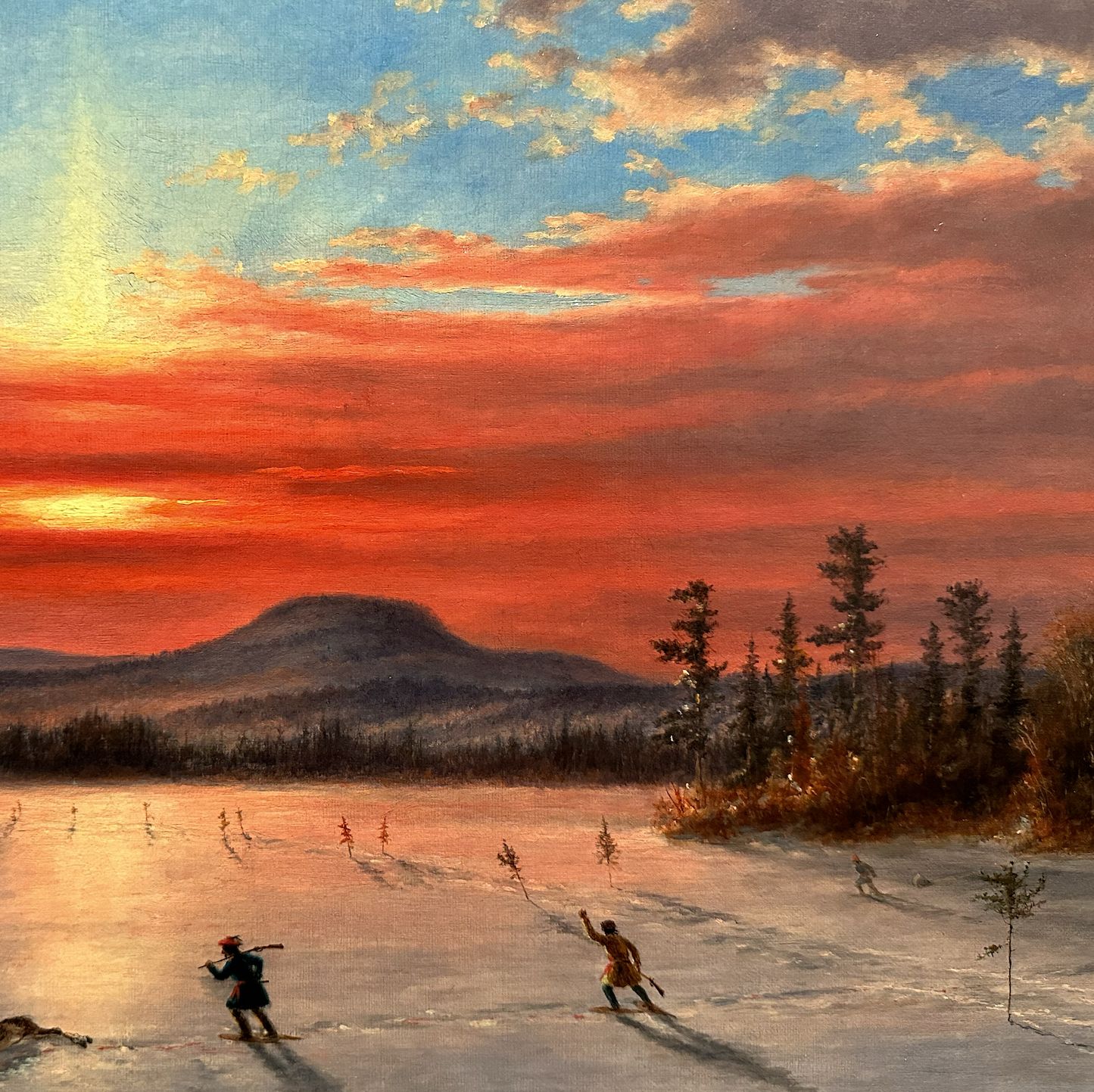
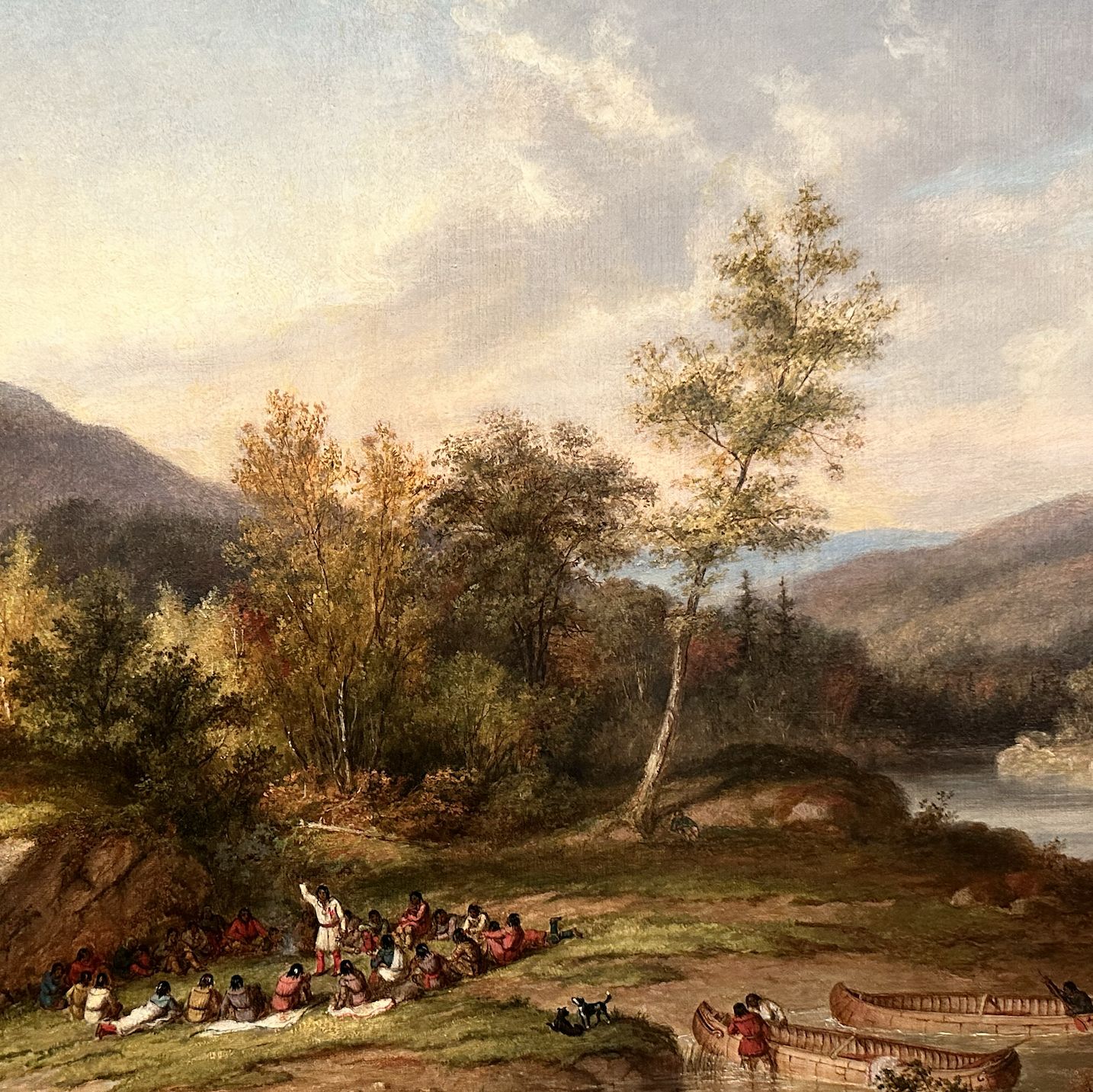
Artist's style and technique
Cornelius Krieghoff produced a rich variety of works during his career, including drawings, prints and, above all, paintings.
Strongly influenced by his Dutch origins, his work shows great meticulousness, particularly in the precision with which he renders every detail, whether of nature or scenes from everyday life.
This methodical, rigorous approach, typical of the Flemish school, gives his works an almost documentary dimension, while retaining an artistic sensibility of their own.
Paradoxically, although his Dutch heritage is undeniable, the workmanship of his paintings bears striking similarities to that of Russian painters.
This is evident not only in the choice of subjects - often melancholy winter or rural scenes - but also in the treatment of light, which plays a central role in creating an atmosphere that is both luminous and intimate.
What's more, the composition of his works, structured and balanced, recalls the attention paid to spatial harmony by 19th-century Russian artists.
Curiously, however, these stylistic correspondences with the Russian school are not the result of any direct influence, nor of any genealogical or formal link with Russian artists.
This aesthetic duality makes Krieghoff an artist of subtle influences, able to cross cultural boundaries while retaining a deeply personal and unique identity.
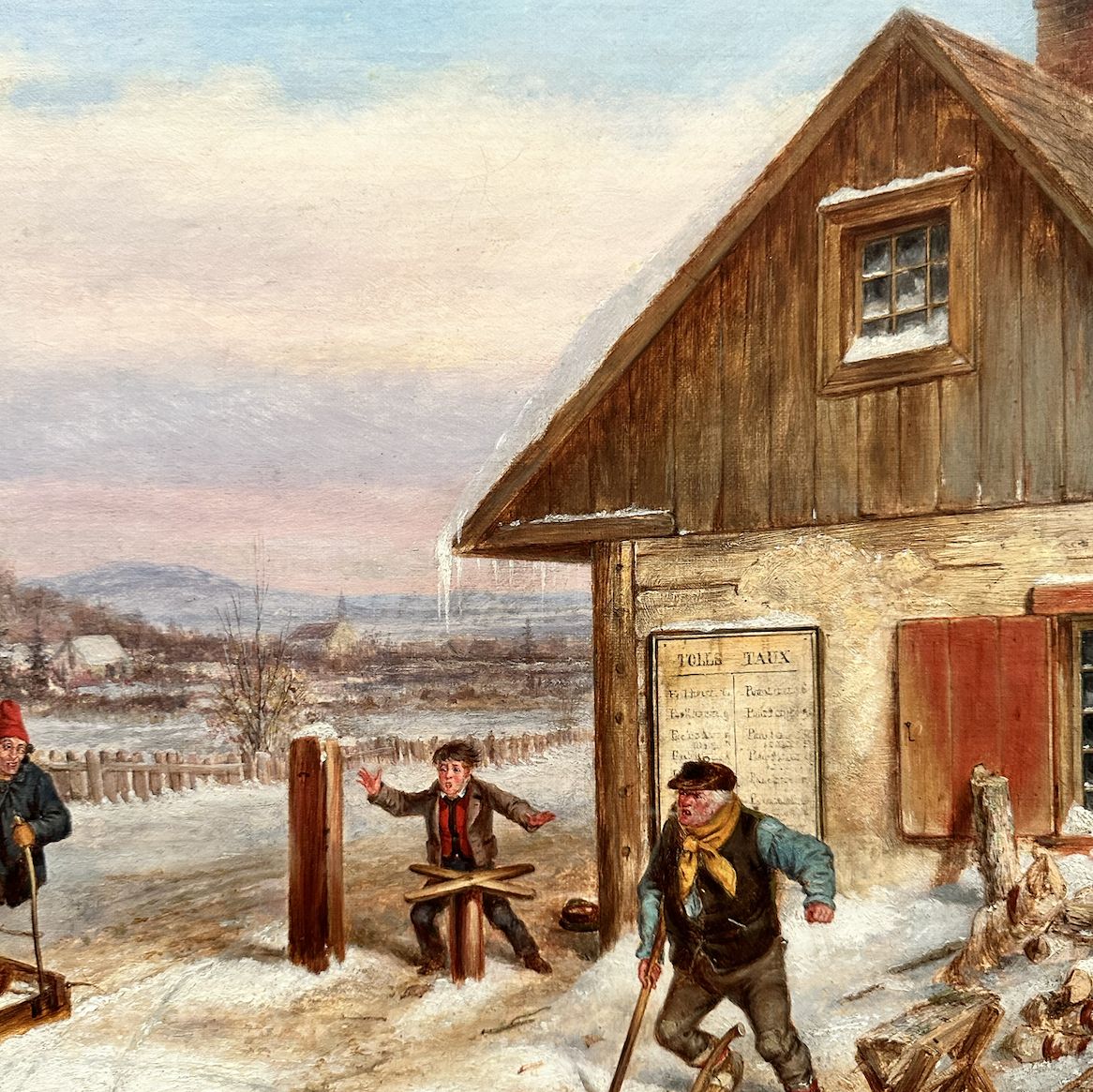
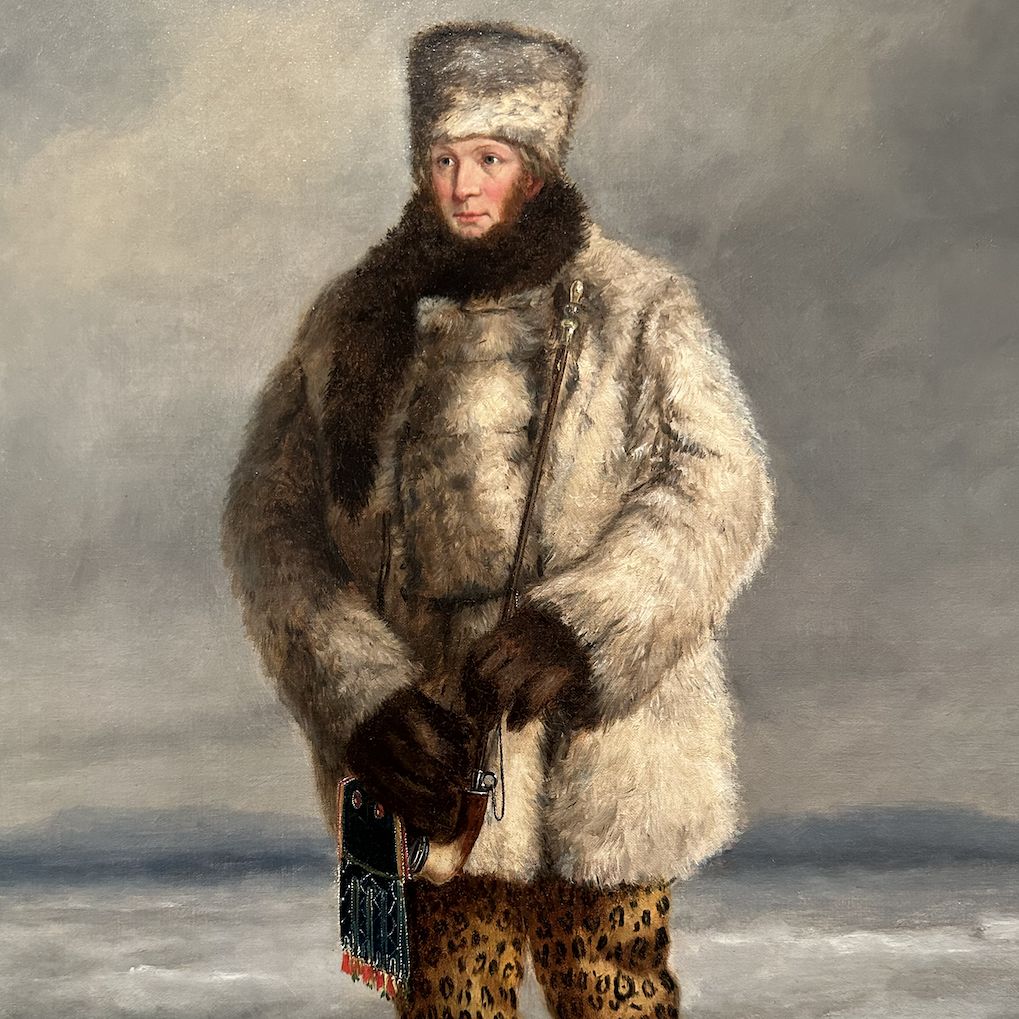
The life of Cornelius Krieghoff
Cornelius Krieghoff (1815-1872), an emblematic figure of Canadian Realism, was a painter of Dutch origin. Born in Amsterdam, he grew up in a Europe in the throes of cultural and artistic change.
Initially drawn to music, he soon turned to painting, immersing himself in the techniques and aesthetics that would mark his later work.
Although little information is available about his family background, it is clear that his youth was marked by an insatiable curiosity for the arts, which led him to leave his native country at an early age to explore the world.
From the age of 18, he embarked on a life of travel, a quest for new experiences and artistic influences.
In 1837, he enlisted in the U.S. Army upon his arrival in New York, an experience that shaped not only his view of the North American landscape, but also his way of capturing scenes of military life.
However, after deserting, Krieghoff was forced to keep a low profile, crossing the border to Canada. The choice of this country was not made at random: geographical proximity and family ties, in particular with his wife of Canadian origin, influenced this crucial decision, which was to shape his artistic destiny.
Settling in Canada, he continued his artistic training, but his ambition didn't stop there. In search of more refined craftsmanship, he flew to Paris, where he attended the École du Louvre under the tutelage of Michel Martin Drolling.
There, he perfected his technique by copying the masterpieces of the French masters, a common practice that enabled him to acquire a flawless mastery of nuances and classical compositions. This period in Paris had a profound effect on him, enriching his artistic vocabulary and refining his sense of detail.
Back in America, Krieghoff resumed his nomadic life, traveling between Toronto, Rochester and Montreal. These travels offered him new perspectives for his art, and it was at this time that he began to immortalize Canada's wild landscapes and aboriginal peoples.
Fascinated by their traditions and way of life, he then focused on depicting these communities, capturing with particular sensitivity the dignity and simplicity of their existence in the midst of vast natural expanses.
These works, imbued with a deep respect for native culture, are both artistic and ethnographic, making Krieghoff a privileged witness of his time.
C. K., The Royal Mail crossing the St. Lawrence
Focus on the cover painting by Cornelius Krieghoff
The painting by Cornelius Krieghoff we're looking at here captures a winter scene in which figures are seated in horse-drawn sleighs, moving over snow-covered ground.
The cool color palette used for the snow and sky, with shades of pink and blue, immediately immerses us in the luminous, crystalline atmosphere of a Nordic twilight.
This wintry depiction, combining realism of detail with a certain atmospheric poetry, is reminiscent of the works of Russian painters such as Iosif Krachkowsky, Constantin Westchiloff or even Alexander Iacovleff.
As with Krachkowsky, the treatment of winter is not merely descriptive, but deeply evocative. The snowy landscape, far from being a mere backdrop, becomes a character in its own right, a majestic backdrop that amplifies the travelers' sense of displacement and adventure.
The sky, all shades of pink, violet and blue, reflects the changing light typical of winter twilight.
In Krachkowsky's work, we often find the same attention to winter light, where the snow, far from being static, becomes a mirror for the sky and its multiple reflections. Krieghoff, like Krachkowsky, manages to capture the delicacy of these moments, when nature seems to breathe in a different way in the cold.
The powerful, vigorous movement of the horses evokes the works of Constantin Westchiloff, particularly his depictions of landscapes animated by scenes of hunting or horse racing.
In Westchiloff, as in Krieghoff, there is a dynamic tension between the static elements of the landscape and the energy of the figures in action. Here, the horses are painted with great anatomical precision, and their movement is rendered with an acute sense of detail.
The power of the animals can be felt beneath the biting cold, and their advance, though harmonious, contrasts with the tranquility of the surrounding landscape.
This duality between movement and immobility is a characteristic that Krieghoff shares with Russian artists, who know how to convey the vital force present in their compositions, while respecting a certain serenity of the environment.

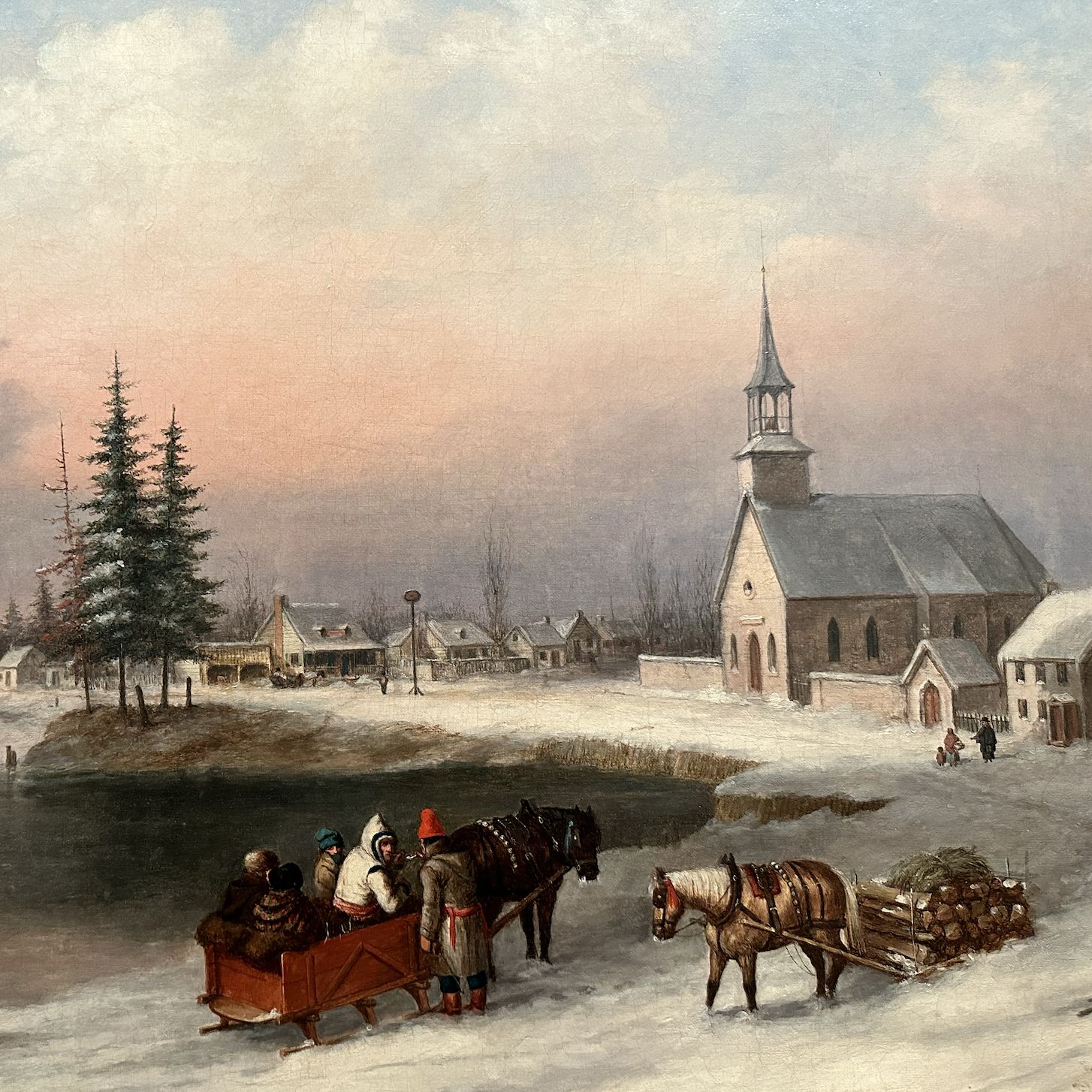
Finally, the figures in the sleds, dressed in furs, reinforce this sense of controlled coldness. Krieghoff, like Alexander Iacovleff, endeavors to accurately depict the way of life of the inhabitants of cold regions.
The detailed furs and relaxed postures of the passengers recall a scene from everyday life in winter, while evoking human resilience in the face of harsh natural conditions.
In his depictions of exotic peoples, Iacovleff takes a similar look at traditional costumes and local customs, seeking to capture the essence of a way of life with great ethnographic respect.
With his paintings of sleighs, horses and their occupants, Krieghoff offers a window on everyday life in the Nordic regions, just as Iacovleff did for Asian or African cultures.
In short, this scene by Krieghoff shares many affinities with the works of Krachkowsky, Westchiloff and Iacovleff.
All seek to transcend simple realism to capture an atmosphere, an emotion, and an intimate relationship between man and nature.
Far from being a simple depiction of a sleigh ride, Krieghoff's painting tells a story of resistance, beauty and communion with the elements, echoing the sensibilities of Russian artists who also immortalized the harsh winters of their homelands.
Cornelius Krieghoff's imprint on his era
Cornelius Krieghoff was a painter who profoundly influenced 19th-century art in Canada. His works, often depicting scenes of daily life, Canadian landscapes and Aboriginal peoples, have become essential records of Canadian history and culture.
They form part of prestigious collections, both private and public, and are actively sought after by many collectors, playing a crucial role in preserving its artistic heritage.
Although some of his works can now be found in major museums in Canada and abroad, it is art enthusiasts who, by acquiring and preserving his paintings, have enabled Krieghoff to maintain his place in art history.
His signature
Not all of Cornelius Krieghoff's works are signed.
Although there are variations, here is a first example of its signature:
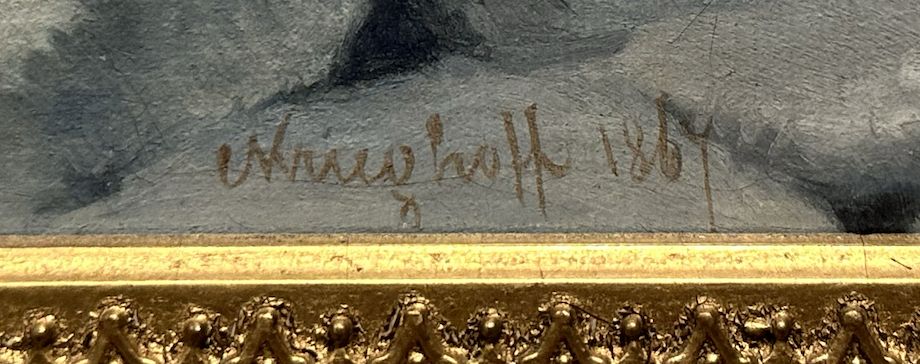
Response in less than 24h
Related topics

Value and quotation of works, paintings by Carolus Duran
Carolus Duran, 19th-century portrait painter, is popular on today's art market. His works have a stable value. Estimate in 24h.
Read more >

Cote et valeur des tableaux d'Hippolyte Lazerges
Hippolyte Lazerges was a painter of religious and Orientalist subjects who produced paintings of high value.
Read more >
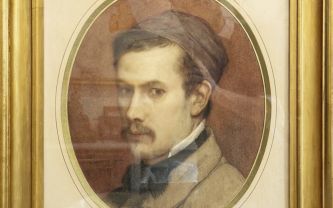
2024 quotation and value of paintings by Jose...
Jospeh Gabriel Tourny is a neoclassical artist with an important quotation and value on the auction market. Estimated in 24h.
Read more >
Secure site, anonymity preserved
State-approved auctioneer and expert
Free, certified estimates
